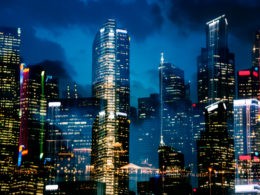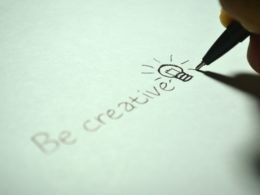For many years, animation has attracted major audiences as a form of entertainment. Character and story development has evolved significantly over time, moving from hand-drawn animations to state-of-the-art computer-generated artwork. Talented people at animated production businesses put in a lot of hard effort to create every cherished animated film or series. We will go into the intriguing process by which these businesses turn concepts into captivating visual experiences in this in-depth article.
The Birth of an Idea
Conceptualization and Brainstorming
Every animated project begins with a spark of creativity. The ideation stage is critical whether the work is an original notion or an adaptation of an already published narrative. To develop the basic concept, animated production companies put together a group of writers, directors, and artists. They delve into a range of topics, characters, and story elements, honing the concept until it becomes a gripping story.
Scriptwriting and Storyboarding
Making a thorough screenplay comes next, after the idea has been established. To create distinctive characters, interesting language, and a well-organized plot, the screenwriters work closely with the creative team. Artists start storyboarding concurrently, utilizing visual aids to depict pivotal moments and chapters. In order to guide the crew through the production process, storyboards function as a blueprint for the whole animation project.
Pre-Production: Laying the Foundation
Character Design and Development
Any animation story’s characters are its core. Animated production firms devote a great deal of time and energy into creating distinctive and captivating characters that attract viewers. To produce the final character designs, character designers first sketch out their ideas in great detail, experimenting with several styles and iterations. They take into account things like character interactions with their surroundings, physical attributes, and personality qualities.
Background and Environment Design
The construction of compelling and convincing landscapes and backdrops is just as crucial as character design. The visual environment that the characters will live in is meticulously created by background artists and designers. To build beautiful, well-coordinated environments that elevate the entire storytelling experience, they investigate and take inspiration from historical allusions, real-world locales, and creative forms.
Voice Acting and Sound Design
Characters are given individuality and emotion through voice acting, which makes them come to life. Animated production firms meticulously select voice actors who are capable of capturing the spirit of each character. To get the ideal performances, recording sessions are carefully planned. Concurrently, sound artists and composers craft the audio environment of the animated realm, integrating ambient sounds, sound effects, and a unique musical composition that accentuates the emotional resonance and harmonizes with the images.
Production: Breathing Life into the Story
Animation Techniques and Tools
The real magic is created during the animation process itself. To make the characters and locations come to life, animated production firms use a variety of methods and resources. In traditional hand-drawn animation, artists carefully sketch every frame to produce expressive and flowing motions. On the other side, computer animation models, rigs, and animates figures in a virtual environment using sophisticated software and tools. Each technique calls for a great degree of dexterity, accuracy, and focus.
Keyframing and In-Between Animation
A basic aspect of animation is called “keyframing,” in which animators specify the key postures, or frames, that indicate a character’s starting and stopping places. The animation sequence is built upon these keyframes. The intermediary frames are then filled in by animators in between, producing realistic motion and seamless transitions. Throughout the entire production, this procedure is performed for each scene and character exchange.
Lighting and Rendering
For animated scenes to have depth, emotion, and atmosphere, lighting is essential. Lighting designers manipulate the qualities of virtual light sources, arrange them with precision, and replicate the way light interacts with people and surroundings. The scenes go through the rendering process when the lighting and animation are complete. In rendering, intricate picture-angle adjustments are applied to produce the final, high-quality pictures that include textures, reflections, shadows, and other visual components.
Post-Production: Refining the Magic
Editing and Composition
Post-production starts when the animation is finished. The animated sequences are thoroughly put together by editors and compositors, who make sure that the pace and transitions are correct. They meticulously choose the greatest takes, edit and organize the video, and craft a seamless narrative flow. Compositing is the process of fusing together different visual components, such character animations, special effects, and backdrop layers, into a cohesive frame.
Visual Effects and Enhancements
Experts in visual effects bring the last touches of magic to the animated production. To increase the total visual impact, they provide amazing visual effects including particle simulations, explosions, and atmospheric features. In order to maintain aesthetically pleasing and consistent color schemes throughout the animation, they also work on color grading. To attain the intended look, they could also add motion blur, use filters, and modify color and contrast.
Sound Mixing and Final Output
During the last phases of post-production, sound designers and mixers create amazing sounds. To provide a complex and engrossing auditory experience, they meticulously integrate and balance the many audio components, such as music, sound effects, and dialogue. They make sure the sound improves the story’s emotional impact and harmonizes with the images. The animation production goes through final quality checks when sound mixing is finished, at which point it is ready for distribution on a variety of channels, including television, streaming services, and theater releases.
The Collaborative Nature of Animated Production
Teamwork and Communication
Producing a masterwork of animation requires teamwork and the knowledge and commitment of many people. To promote smooth departmental collaboration, animated production firms cultivate a culture of teamwork and open communication. The manufacturing process may be made more efficient by holding regular meetings, providing feedback, and having innovative conversations to help everyone see the same goal and overcome any obstacles.
Iterative Process and Refinement
The process of animation is evolutionary and necessitates continuous progress. Production businesses that specialize in animation promote a culture of iteration and constructive criticism. The work of animators and artists is constantly reviewed and improved upon, with required changes made in response to input from directors, producers, and other team members. By using an iterative process, the final output is guaranteed to match the highest quality and narrative requirements.
Balancing Creativity and Technical Constraints
Production businesses that specialize in animation need to carefully combine their creative freedom with technological limitations. The creative team must operate within the constraints of available resources, time, and money even as they seek to push the bounds of creativity. In order to keep the project on schedule and produce the intended outcomes, producers and technical directors work closely with the creative team to identify creative ideas and streamline processes.
The Evolution of Animated Video Production
Advancements in Technology
Significant technological breakthroughs have been made in the field of animated video production throughout the years. Animation production firms have always employed many tools and techniques, from the days of hand-drawn cel animation to the emergence of computer-generated imagery (CGI). Excellent images and immersive environments can now be created with greater ease because to powerful hardware, cutting-edge software, and inventive rendering techniques.
Pushing the Boundaries of Storytelling
With the advancement of technology, animation storytelling has also advanced. Production businesses that specialize in animation are continuously pushing the envelope and investigating novel story structures, subjects, and genres. They work hard to tell engrossing tales that speak to audiences of all ages and address difficult societal topics, complicated emotions, and common human experiences. Animation offers boundless creative freedom and the capacity to express important ideas via emotive narrative and engrossing images.
The Future of Animated Video Production
There are a ton of intriguing possibilities for animated video production in the future. Animated production businesses have the opportunity to provide increasingly immersive and interactive experiences with the ongoing progress made in virtual reality, augmented reality, and real-time rendering. The combination of machine learning and artificial intelligence may help create more flexible and adaptable virtual environments, help with activities like lighting and character animation, and expedite production processes.
The Impact of Animated Production Companies
Entertaining and Inspiring Audiences
All ages of audiences can be delighted and motivated by animated production firms. Their works have the power to arouse a variety of emotions in viewers, take them to fanciful places, and have a long-lasting influence on pop culture. These businesses have the rare capacity to enthrall and engage viewers, creating a profound respect for the art form, whether they are producing well-loved children favorites or provocative adult-oriented cartoons.
Driving Technological Advancements
Technological developments in the entertainment business have been propelled by cartoon production firms’ quest of innovation and quality. The limits of computer technology, software, and rendering power have been stretched by the rigorous demands of animated video production. These developments have not only helped the animation sector but have had a significant impact on other industries as well, including virtual reality, gaming, and visual effects.
Promoting Cultural Diversity and Representation
Production businesses that specialize in animation have the duty and chance to encourage representation of many cultures in their works. These businesses may promote a more accepting and understanding society by narrating tales from many cultures, including characters from a range of backgrounds, and tackling significant social concerns. Animation has the capacity to shatter down boundaries, confront preconceptions, and encourage acceptance and empathy in its audience.
Conclusion
In conclusion, animation production firms use imagination and talent to bring our beloved tales and characters to life. To produce amazing animations, they begin with concepts, collaborate to enhance them, and then utilize cutting-edge technology. These businesses inspire, amuse, and influence our cultural environment by embracing diversity and challenging limits. They pledge to provide audiences everywhere with even more innovative and welcoming experiences as they develop further.
⸻ Author Bio ⸻

Rose Eden Dagohoy is a freelance copywriter passionate about helping startups and small businesses. Her dedication to helping emerging brands find their voice and succeed in competitive markets sets her apart as a valuable asset in the world of digital marketing.












